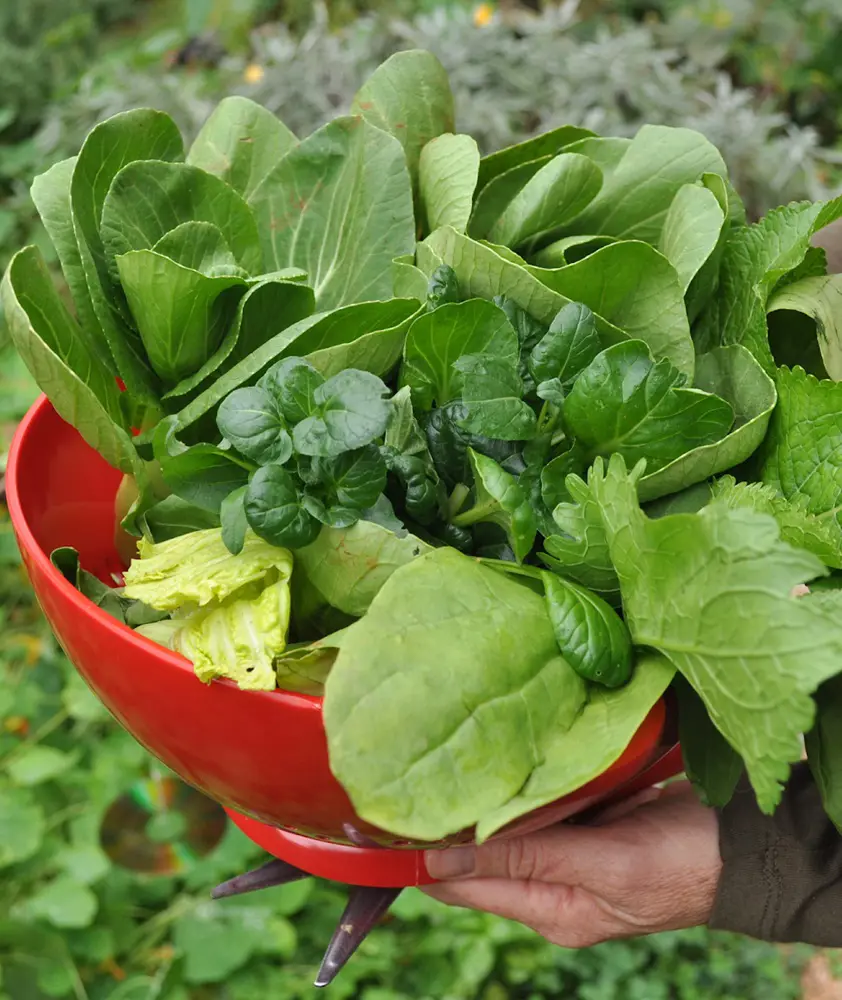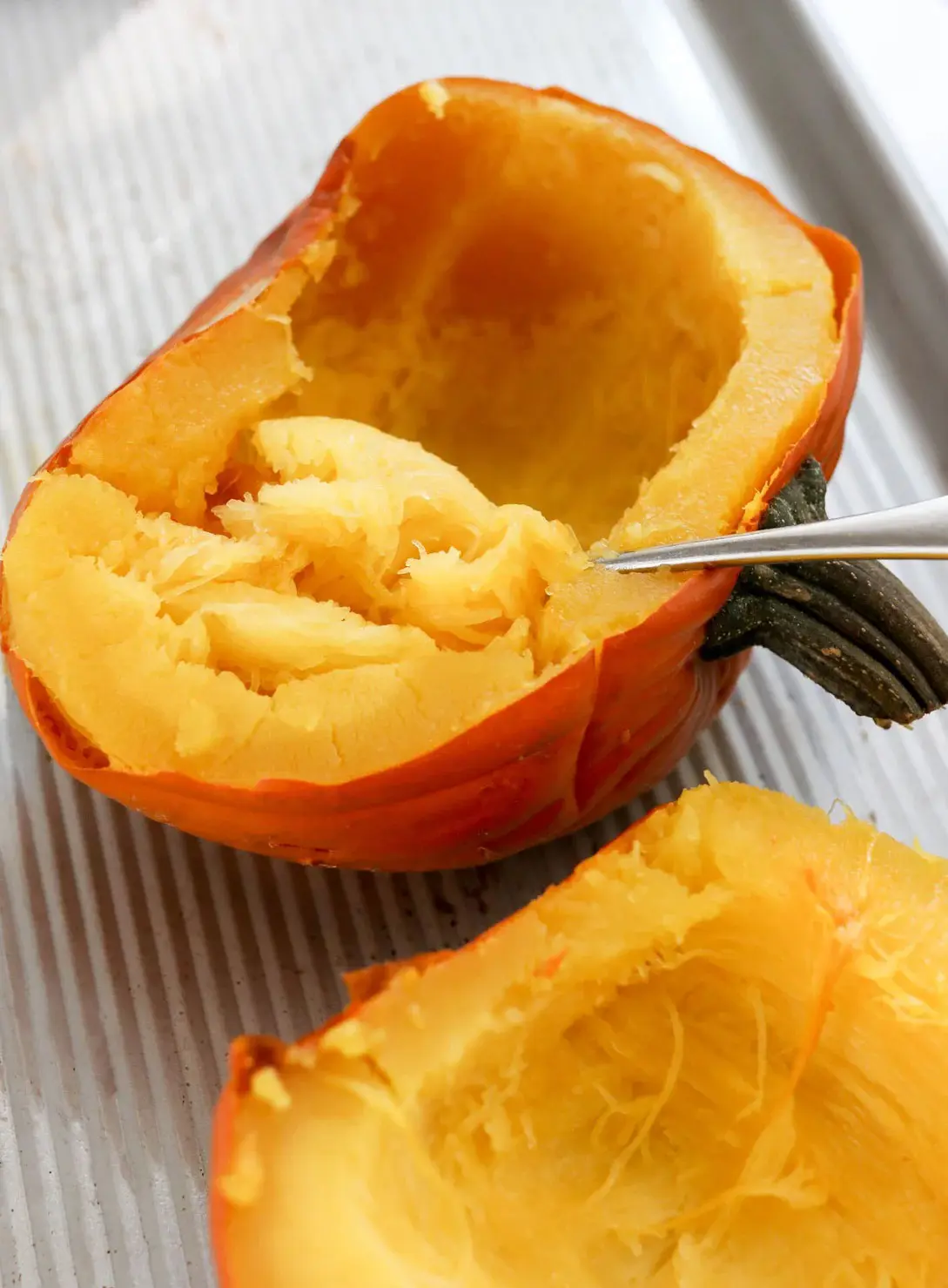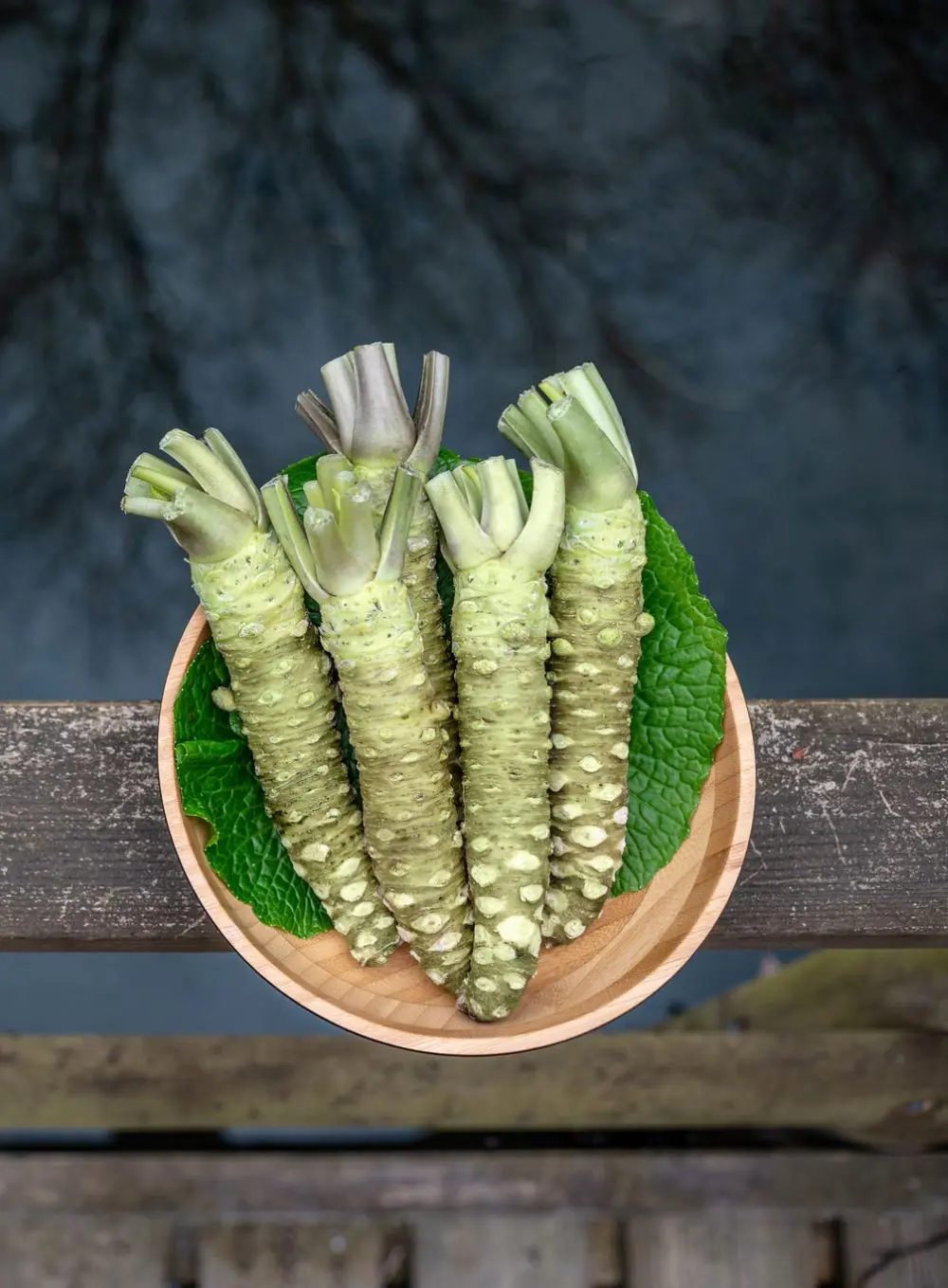Asian greens and vegetables offer a delightful array of flavors, textures, and nutritional benefits. From the peppery kick of mizuna to the robust heartiness of bok choy, these greens are staples in many Asian cuisines, each bringing unique qualities to the table.
This complete guide explores 15 of the most popular Asian greens and vegetables, providing insights into their culinary uses, health benefits, and tips for selection and storage, helping you incorporate these vibrant ingredients into your meals.
Asian Greens and Vegetables
1. Bok Choy (Chinese Cabbage)
Bok choy, with its crisp white stems and tender green leaves, is a staple in many Asian cuisines. Its versatility allows it to be used in a wide range of dishes, from stir-fries and soups to salads and steamed sides. Nutritionally, bok choy is a powerhouse, rich in vitamins A, C, and K, as well as calcium and iron.
These nutrients are essential for supporting bone health, boosting the immune system, and promoting eye health. Incorporating bok choy into your diet can significantly enhance your nutritional intake while adding a delightful crunch and fresh flavor to your meals.
2. Napa Cabbage
Napa cabbage, recognized by its large, oblong shape and pale green leaves, is a key ingredient in many traditional Asian dishes, including kimchi and Chinese hot pots. It is high in fiber, vitamin C, and folate, which are crucial for maintaining good digestive health, supporting cardiovascular health, and enhancing skin health.
Napa cabbage’s mild flavor and crunchy texture make it a versatile addition to various dishes, whether fermented, stir-fried, or used as a base for salads. Its nutritional profile helps in improving digestive functions and providing essential nutrients for overall health.
3. Gai Lan (Chinese Broccoli)
Gai lan, known for its thick, tender stems and dark green leaves, offers a slightly bitter taste that is complemented well when stir-fried with garlic. This vegetable is packed with vitamins A, C, and K, as well as calcium and iron.
These nutrients make it an excellent choice for promoting bone health, supporting immune function, and potentially helping to regulate blood sugar levels. Gai lan is not only nutritious but also brings a distinctive flavor to dishes, making it a popular choice in Chinese cuisine for adding both texture and a nutritional boost.
4. Mizuna
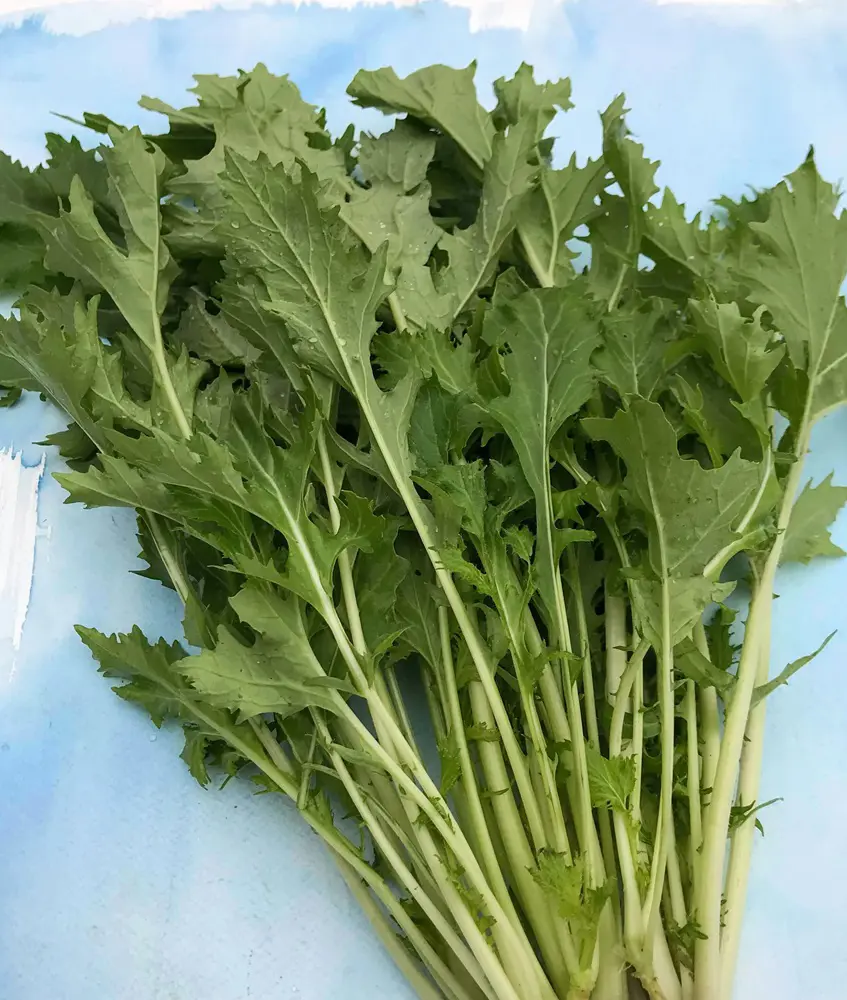
Mizuna is a Japanese mustard green with delicate, feathery leaves and a peppery flavor, making it a perfect addition to salads and stir-fries. This green is rich in vitamins A, C, and K, along with antioxidants that help boost immune health, improve eye health, and provide anti-inflammatory benefits.
Mizuna’s unique flavor and nutritional benefits make it a valuable ingredient in various dishes, adding a touch of zest and enhancing the overall nutritional profile of meals.
5. Tatsoi
Tatsoi, a dark green leafy vegetable with spoon-shaped leaves, offers a mild, sweet taste that is often enjoyed in soups and salads. It is high in vitamins A, C, and K, as well as folate, which are essential for enhancing immune function, supporting bone health, and aiding in cell repair and growth.
Tatsoi’s tender texture and subtle flavor make it a versatile ingredient in many dishes, providing both nutritional value and a pleasant taste that complements a variety of recipes.
6. Water Spinach (Kang Kong)
Water spinach, a semi-aquatic plant with hollow stems and tender leaves, is a popular ingredient in Southeast Asian cuisine. It is packed with vitamins A and C, iron, and calcium, which support vision, boost immunity, and help prevent anemia.
Water spinach’s mild flavor and tender texture make it a versatile addition to many dishes, whether stir-fried, steamed, or used in soups. Its nutritional benefits and culinary versatility make it a valuable component of a healthy diet.
7. Shiso (Perilla)
Shiso leaves, known for their aromatic and unique flavor, are commonly used in Japanese and Korean dishes, both fresh and pickled. These leaves are high in vitamins A, C, and calcium, providing anti-inflammatory benefits, supporting respiratory health, and being rich in antioxidants.
Shiso adds a distinctive flavor to dishes, enhancing both taste and nutritional value and is often used to wrap sushi or garnish various culinary creations.
8. Amaranth Greens
Amaranth greens, the nutritious leaves from the amaranth plant, are frequently used in Indian and Southeast Asian cuisine. They are rich in vitamins A, C, and K, and iron, which promote eye health, support immune function, and help combat anemia.
The vibrant green leaves of amaranth add both color and nutritional value to dishes, making them a popular choice for salads, stir-fries, and soups, where their mild flavor can complement a variety of ingredients.
9. Moringa Leaves
Moringa leaves are small, nutrient-dense leaves from the moringa tree, widely used in South Asian cooking. These leaves are high in vitamins A and C, calcium, and protein, which boost energy, support bone health, and provide anti-inflammatory properties.
Moringa leaves are often used in soups, stews, and curries, adding a nutritional boost and a slightly bitter taste that enhances the overall flavor of dishes.
10. Bitter Melon
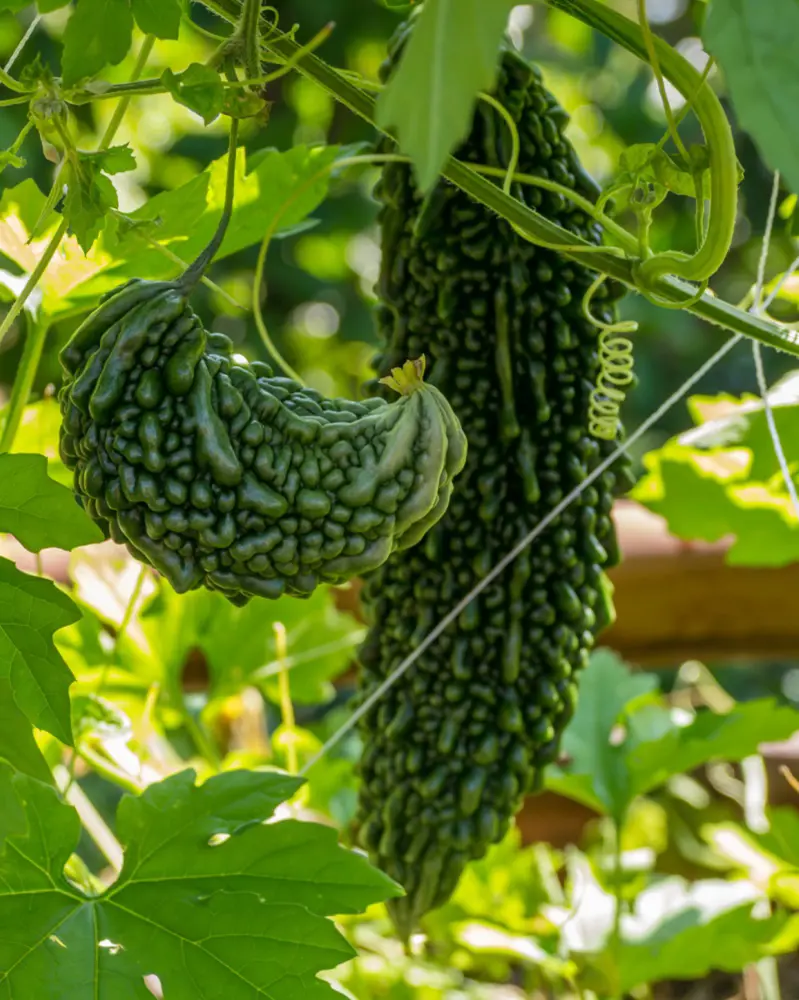
Bitter melon is an oblong, warty vegetable with a distinct bitter taste, commonly used in stir-fries and soups. It is rich in vitamins C and A, and folate, which help regulate blood sugar, support liver health, and enhance immune function.
Despite its bitterness, bitter melon is valued for its health benefits and unique flavor, often used in traditional medicine and culinary applications to provide both nutritional and medicinal benefits.
11. Mustard Greens
Mustard greens, with their pungent, peppery leaves, are often used in Chinese and Indian cuisine. They contain vitamins A, C, and K, and calcium, which support bone health, boost immunity, and have detoxifying properties.
Mustard greens add a spicy kick to dishes, making them a flavorful and nutritious addition to soups, stir-fries, and salads, where their robust taste and health benefits can be fully appreciated.
12. Chinese Celery
Chinese celery, thinner and more aromatic than regular celery, is extensively used in Chinese cooking. It is high in vitamins A and C, and potassium, which aid digestion, support cardiovascular health, and help reduce inflammation.
Chinese celery’s strong flavor and crunchy texture make it a versatile ingredient in many dishes, adding both nutritional value and a distinctive taste to stir-fries, soups, and salads.
13. Komatsuna (Japanese Mustard Spinach)
Komatsuna is a versatile green with a mild mustard flavor, used in soups, salads, and stir-fries. It is rich in vitamins A, C, and K, and calcium, which enhance bone health, boost immune function, and promote eye health.
Komatsuna’s tender leaves and subtle taste make it a popular choice in various dishes, providing both nutritional benefits and a pleasant flavor that complements a wide range of recipes.
14. Garland Chrysanthemum (Tong Ho)
Garland chrysanthemum, with its aromatic and tender leaves, is used in Chinese and Japanese hot pots and soups. It is high in vitamins A and C, and antioxidants, which support eye health, boost immunity, and have anti-inflammatory properties.
The unique flavor of garland chrysanthemum adds a fragrant and nutritious element to dishes, making it a popular choice for enhancing both the taste and health benefits of various culinary creations.
15. Daikon Radish Greens
Daikon radish greens are the leafy tops of the daikon radish, often used in Japanese and Korean cuisine. They contain vitamins A, C, and K, and calcium, which promote bone health, support digestion, and enhance immune function.
Daikon radish greens add a nutritious and flavorful touch to dishes, providing both taste and health benefits, and are often used in salads, soups, and as a garnish for various recipes.
Must Know Facts About Asian Greens and Vegetables
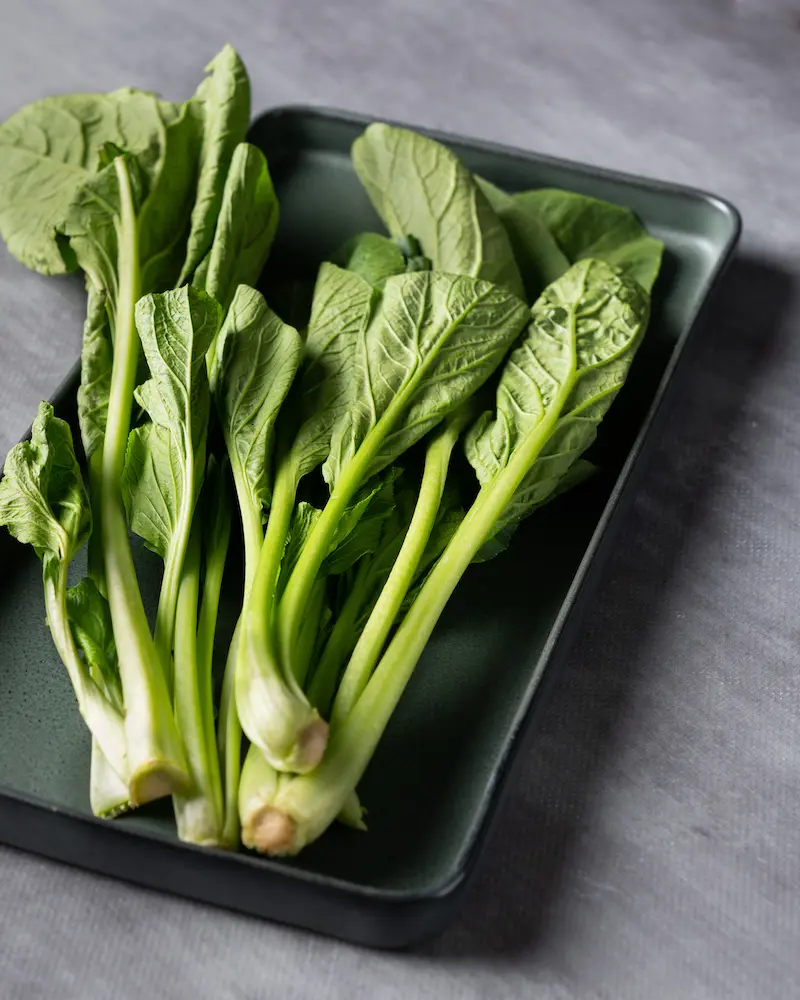
- Nutrient-Dense: Asian greens and vegetables are rich in essential vitamins and minerals, including vitamins A, C, and K, iron, calcium, and antioxidants.
- Health Benefits: These greens support immune function, bone health, eye health, and cardiovascular health, and have anti-inflammatory properties.
- Culinary Versatility: They can be used in a variety of dishes, including stir-fries, soups, salads, and stews, adding unique flavors and textures.
- Cultural Significance: Many Asian greens are integral to traditional dishes and cooking methods in Chinese, Japanese, Korean, Thai, Vietnamese, and other Asian cuisines.
- Varied Flavors and Textures: From the peppery bite of mizuna to the mild sweetness of tatsoi, and the bitter taste of bitter melon, these greens offer a wide range of flavors and textures.
- Supports Plant-Based Diets: Asian greens can serve as excellent meat substitutes, providing essential nutrients in plant-based diets.
- Low-Calorie Options: Many of these vegetables are low in calories, making them ideal for weight management and healthy eating.
- Easy to Cook: Most Asian greens cook quickly, retaining their nutritional value and vibrant colors, making them convenient for quick meals.
- Anti-Diabetic Properties: Vegetables like bitter melon are known for their potential to regulate blood sugar levels.
- Detoxifying Properties: Greens such as mustard greens and Chinese celery are believed to have detoxifying effects on the body.
- Supports Digestion: High fiber content in greens like napa cabbage and amaranth greens aids digestion and promotes gut health.
- Widely Available: Many Asian greens are now commonly available in supermarkets and Asian grocery stores worldwide.
- Seasonal Variety: There is a wide range of greens available year-round, allowing for seasonal variety in your diet.
- Culinary Fusion: These vegetables can be easily incorporated into non-Asian cuisines, adding unique flavors and nutritional benefits to various dishes.
- Sustainability: Growing and consuming a variety of greens can support sustainable agricultural practices and biodiversity.
Incorporating these must-know facts about Asian greens and vegetables can enhance your culinary skills, improve your health, and expand your appreciation for global cuisines.
Why Try More Asian Leafy Greens & Vegetables
Incorporating a variety of Asian leafy greens and vegetables into your diet can greatly enhance your culinary experiences and nutritional intake.
These greens, staples in many Asian cuisines, are nutrient-dense and offer a range of health benefits, including vitamins, minerals, antioxidants, and phytochemicals that boost immunity and reduce chronic disease risk. They also introduce unique flavors and textures, inspiring creativity in the kitchen.
Culturally significant, these greens are integral to traditional Asian dishes, offering a deeper appreciation of these cuisines. As plant-based diets gain popularity, Asian greens provide diverse, nutritious, and sustainable options for exciting and healthful meals.
FAQs
What are some common Asian greens and vegetables?
Common Asian greens and vegetables include bok choy, napa cabbage, gai lan (Chinese broccoli), mizuna, tatsoi, water spinach (kang kong), shiso (perilla), amaranth greens, moringa leaves, bitter melon, mustard greens, Chinese celery, komatsuna (Japanese mustard spinach), garland chrysanthemum (tong ho), and daikon radish greens.
How do I store Asian greens and vegetables to keep them fresh?
Most Asian greens should be stored in the refrigerator, wrapped in a damp paper towel, and placed in a plastic bag or airtight container to maintain freshness.
Greens like bok choy and napa cabbage can last up to a week, while more delicate greens like mizuna and shiso should be consumed within a few days. Avoid washing them before storage to prevent excess moisture.
What are the health benefits of eating Asian greens and vegetables?
Asian greens and vegetables are packed with essential nutrients, including vitamins A, C, and K, as well as minerals like calcium and iron.
They offer numerous health benefits such as boosting the immune system, supporting bone health, improving eye health, aiding digestion, and possessing anti-inflammatory properties. Some, like bitter melon, can help regulate blood sugar levels.
How can I incorporate Asian greens and vegetables into my diet?
Asian greens and vegetables are versatile and can be incorporated into a variety of dishes. They can be stir-fried, added to soups and stews, used fresh in salads, or pickled.
For example, bok choy is excellent in stir-fries, napa cabbage is perfect for making kimchi, and shiso leaves add a unique flavor to sushi and salads. Experiment with different cooking methods to find your preferred way of enjoying them.
Are Asian greens and vegetables available year-round?
Many Asian greens and vegetables are available year-round, but their peak seasons can vary. For instance, bok choy and napa cabbage are typically available throughout the year, while greens like mizuna and tatsoi are more abundant in the cooler months.
Check your local supermarkets or Asian grocery stores for seasonal availability, and consider visiting farmers' markets for the freshest options.

